 Expert's opinion
Expert's opinion
Expert's opinion
The article is a subjective view on this topic written by writers specializing in medical writing.
It may reflect on a personal journey surrounding struggles with an illness or medical condition, involve product comparisons, diet considerations, or other health-related opinions.
Although the view is entirely that of the writer, it is based on academic experiences and scientific research they have conducted; it is fact-checked by a team of degreed medical experts, and validated by sources attached to the article.
The numbers in parenthesis (1,2,3) will take you to clickable links to related scientific papers.
What Is The Best Bread For Diabetes In 2024? 5 Great Options To Try
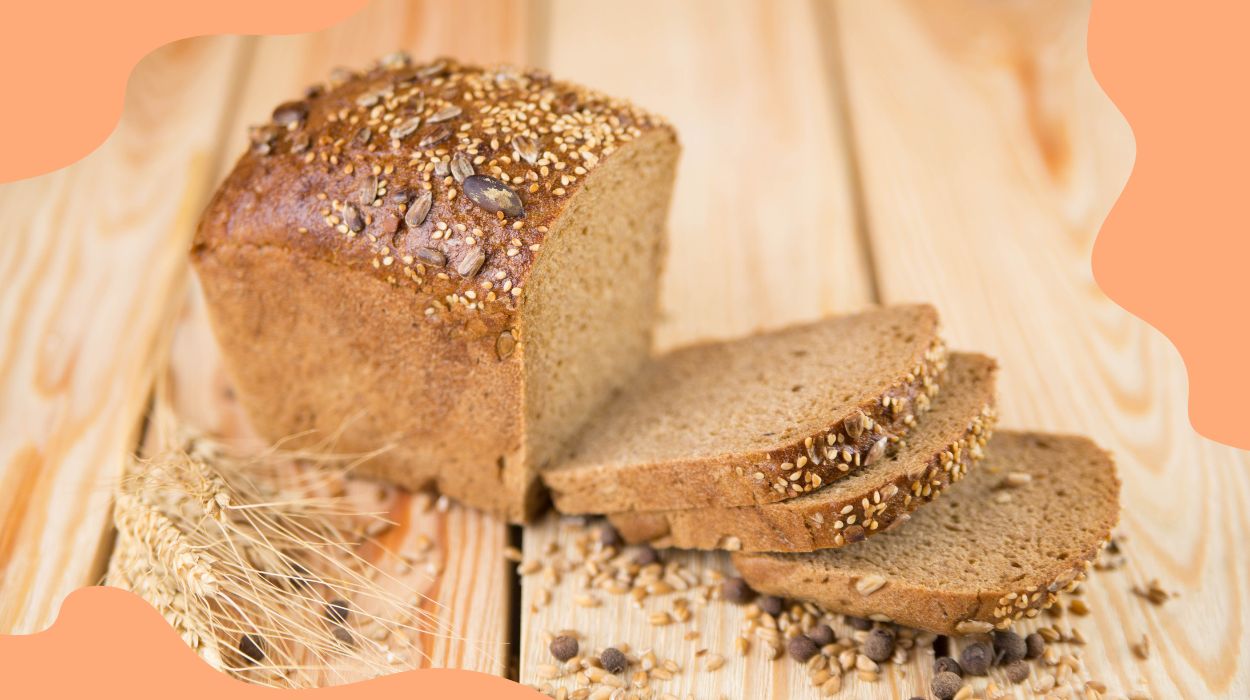
Making a diabetic meal plan can be tricky. You don’t always know how much sugar is in what you eat or even how often you should eat. Plus, healthy snacks for those with diabetes aren’t so easy to find.
Luckily, eating well gets easier when you learn how much of certain foods you need and what types are best. And at least superfoods for those with diabetes can be more available, like nuts, seeds, and veggies.
Also, contrary to popular belief, it is safe for people with diabetes and even prediabetes to eat bread in moderation. However, not all bread can work with diabetic meal plans as not all breads are good sources of dietary fiber.
This poses the question: what is the best bread for diabetes?
Diabetes-Friendly Breads
People with diabetes don’t need to omit bread from their diets at all. Research suggests that the following types of bread high in dietary fiber can benefit those with diabetes:
- 100% whole grain bread.
- Sourdough bread.
- Pumpernickel bread.
- Fenugreek bread.
- Sprouted Ezekiel bread.
Can People With Diabetes Eat Bread?
In short, yes. People with diabetes still need to consume some carbs to maintain proper blood sugar levels.
While high-carbohydrate foods can impact blood glucose negatively, avoiding carbs entirely can lead to insulin shock.[1] Insulin shock occurs when there is an imbalance between the amount of food you consume and your insulin levels. It can be dangerous for those with diabetes.
Ideally, those who have a diagnosis of diabetes will want to look for bread with low carbs, low saturated fat and high nutrients, healthy fats, and fiber.
What Are The Best Bread For Diabetes?
100% Whole Grain Bread
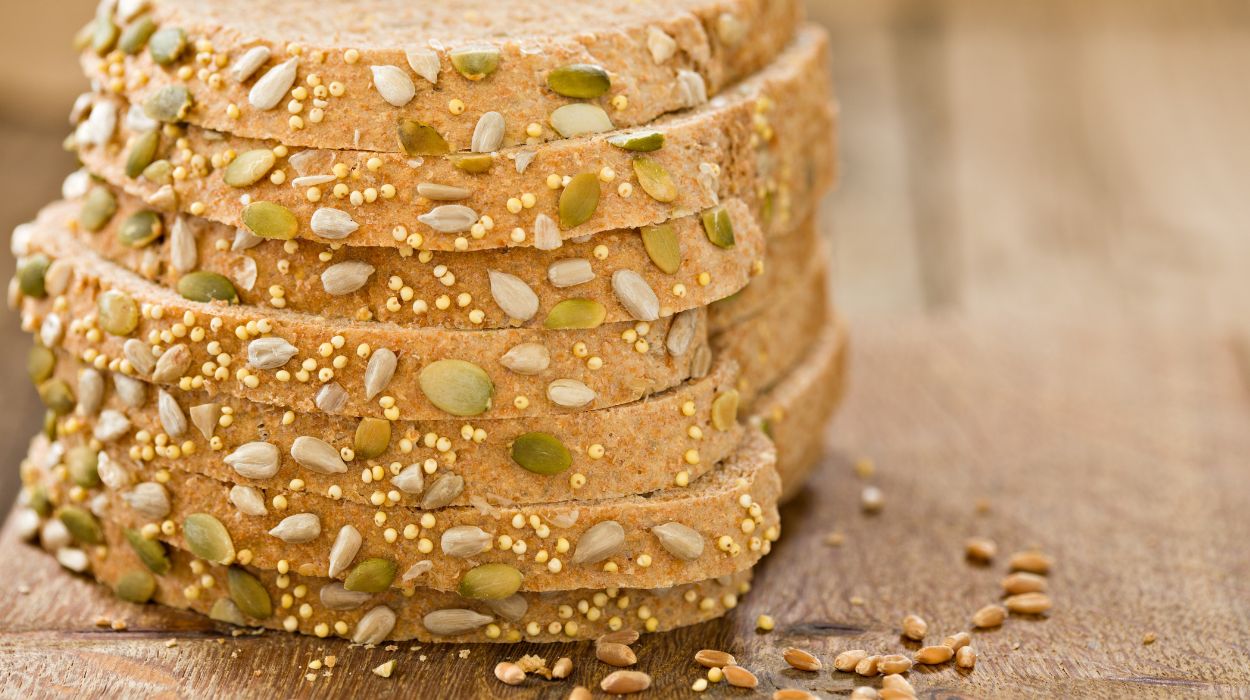
As the name suggests, whole grain bread is made with one fully intact whole grain type. This includes whole wheat flour, barley, oats, and even brown rice.
It’s arguably the best bread for people with diabetes. It is also considered the best bread for prediabetes.
Whole grain bread is high in dietary fiber and some nutrients, which is especially important for those suffering from diabetes.
Why Fiber Matters
Including high soluble and insoluble fiber[2] is the most important aspect of picking a suitable bread. Unlike refined carbs, soluble fiber doesn’t cause a blood sugar spike since the body can’t absorb it.
Fiber, in general, moves food through your stomach more slowly, helping you to feel fuller longer — with soluble fiber slowing carb digestion, promoting a more gradual rise in blood sugar, and the insoluble fiber regulates bowel movements. And that’s why high-fiber diets are extremely helpful for people with diabetes[3] — adding some to every meal can help with weight, glycemic control, and other cardiometabolic risk factors.
Sourdough Bread
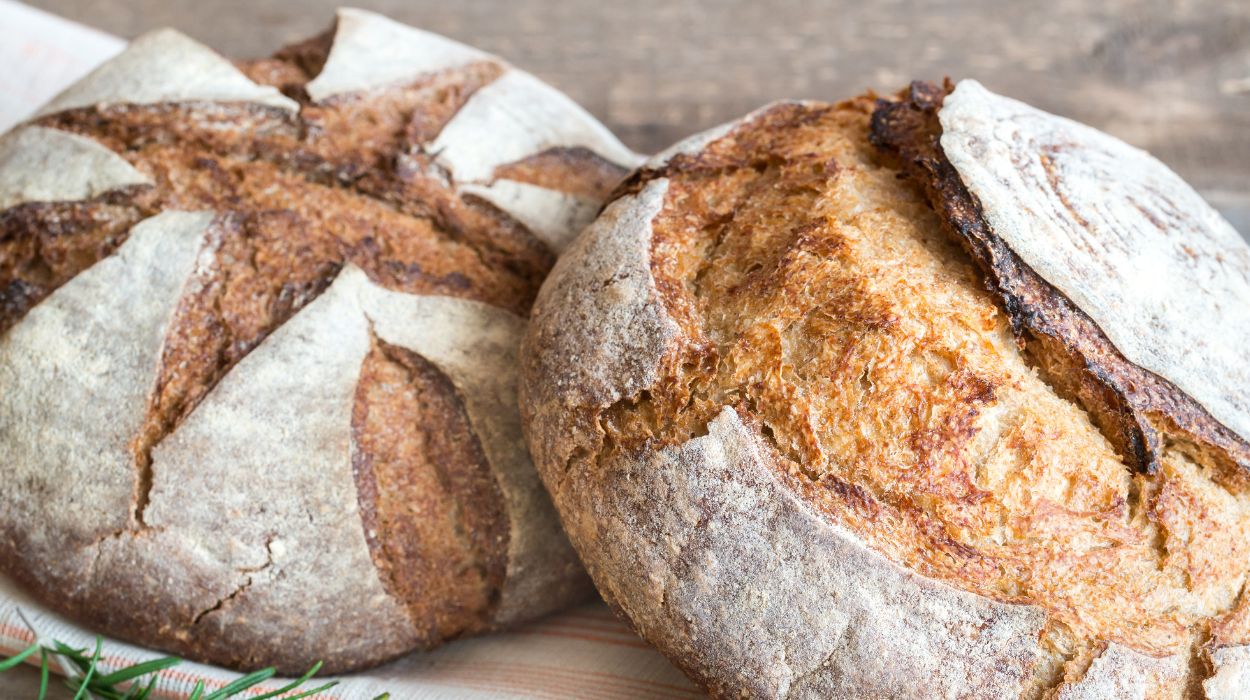
Sourdough[4] is a type of bread that doesn’t use baker’s yeast for it to rise. Instead, it relies on a sourdough starter with lactic acid bacteria and wild yeast. The interaction between the flour and the starter’s composition during the baking process leads to a kind of fermentation. This is what makes this type of bread both soft and ever-so-slightly sour.
While this won’t lower blood sugar, it can raise it much more slowly than other kinds of bread.
The fermentation process[5] in food products is shown to help reduce the glycemic response in those with type 2 diabetes. This process alone could allow it to have a better effect on both insulin and blood sugar levels than most common types of bread.
Pumpernickel Bread
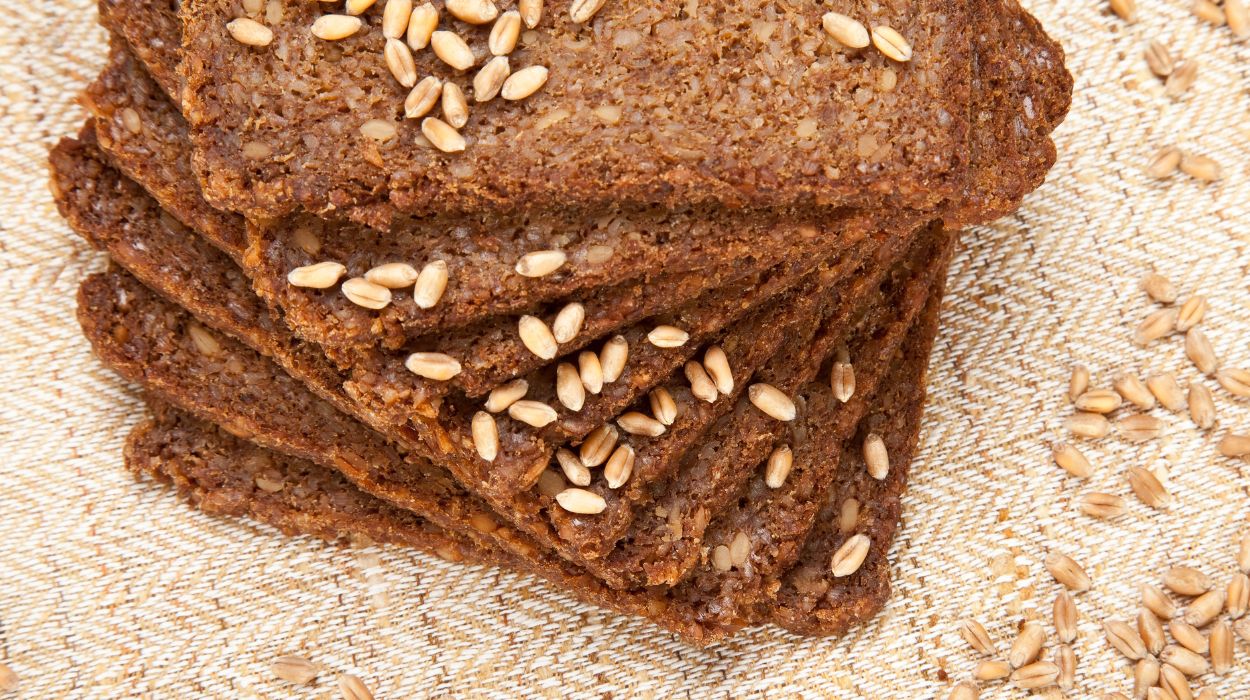
Pumpernickel is somewhat similar to a typical sourdough bread. It is made with a sourdough starter, but coarsely ground rye is the specific flour used for this recipe. This makes it rather dense and slightly sweet, making it perfect for eating on its own or even with borscht or other hearty soups. Fortunately, it’s also very rich in fiber and an affordable ingredient.
The high fiber count of whole grain or whole rye and the fermentation process makes it a great choice. This kind of bread can provide rather helpful glycemic effects for[6] those with diabetes, especially those who are reliant on insulin. Specifically, it has phenolic compounds[7] that may slow the release of sugar[8] and insulin into the bloodstream.
Fenugreek Bread

This kind of bread typically incorporates dry fenugreek[9] leaves, which give it an earthy flavor that can complement your sandwiches or be eaten on its own.
Despite its intensely bitter taste that can drive many people away from it, fenugreek is shown to possess high levels of soluble fiber[10] that can help lower blood sugar levels. Overall, it’s been shown to reduce insulin resistance[11] for those who have type 2 diabetes.
Sprouted Ezekiel Bread
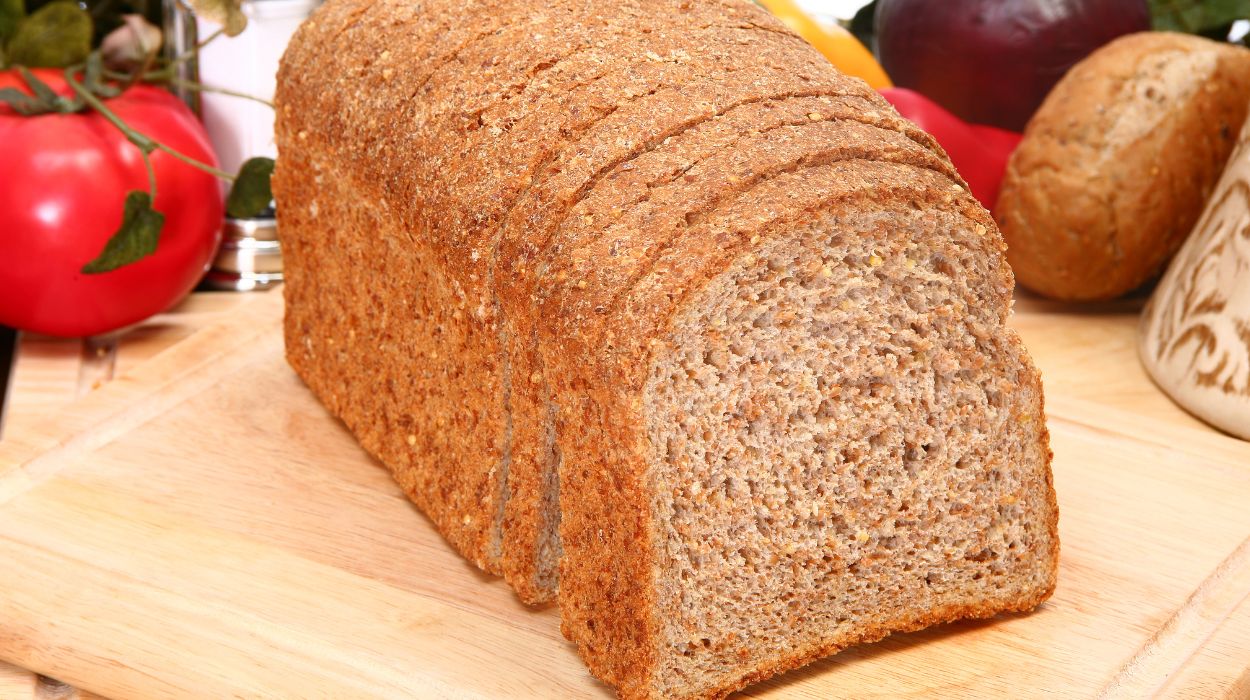
Unlike the other types of bread used on this list, Ezekiel bread is considered to be grain-free bread free of highly processed white flour typically found in bakery bread. Sprouted bread like Ezekial’s is made with fresh grains and legumes that are germinated instead of ground into any kind of flour. This composition makes it one of the healthiest bread choices and provides a rich taste and high levels of nutrients, fiber, and protein.
How To Include Bread In A Diabetes Eating Plan
When it comes to bread, it’s a balancing act of trying to monitor how many carbs you consume to avoid raising blood sugars. Pairing a slice of whole wheat bread with a protein source such as unsweetened peanut butter will also alleviate the blood sugar spikes.
On top of the amount, the type of bread you eat matters. Some ingredients like whole grains — preferably germinated or fermented — and rising agents with probiotics and wild yeast can help manage blood sugar levels. Others, like the ones listed below, may raise blood sugar.
Ingredients To Avoid
Added Sugars And Sweeteners
If you have diabetes and plan to buy your bread from your local grocery store, be sure to check the package label for the ingredient list. If you see any high fructose corn syrup, molasses, sucrose, or dextrose, you might want to put it back on the shelf and look for a different loaf.
The same goes for artificial sweeteners[12] such as sucralose and aspartame. Despite being considered a sugar substitute, they can still harm diabetes control by negatively affecting the gut microbiome’s diversity — promoting the growth of bad bacteria, and destabilizing glucose control.[13]
If you have diabetes, all types of sugar must be monitored. Otherwise, too much can lead to insulin resistance, weight gain, and kidney damage[14] in more severe cases.
Dried Fruits
Anyone with diabetes should stay clear of dry fruit with added sugar. According to the American Diabetes Association, dried fruits without added sugar,[15] such as prunes, apricots, and figs, can be safely added to a controlled diabetic’s meal plan.
White Flour
Any bread made with refined carbohydrates like white flour will be low in fiber and will be higher on the glycemic index. White flour has a high glycemic index of 70[16] which can lead to dangerous spikes in blood sugar levels for people with diabetes.
The glycemic index measures how fast a food raises blood glucose levels, with pure glucose having a value of 100 on a scale of 0-100. Plus, the low amount of fiber in white bread allows for glucose spiking, while the GI of wheat bread is only 53.
With this in mind, those who have diabetes should avoid white bread or any other bread made with white flour. And besides worsening symptoms, it doesn’t have many nutrients, which might lead you to need vitamins specifically for those with diabetes. White bread also lacks protein that others may contain, so if you eat it often, you may also want to consider protein supplements.
Conclusion
For those whose favorite foods involve bread, diabetes is not the end. However, you will have to switch out some types of bread for others. Fortunately, there are both pre-made breads that you can buy and recipes for bread suitable for those with diabetes that you can make if you prefer homemade meals.
Even if you don’t have diabetes, making bread for diabetes part of your healthy meal choices can help you manage your blood sugar — and be part of a balanced diet.
+ 16 sources
Health Canal avoids using tertiary references. We have strict sourcing guidelines and rely on peer-reviewed studies, academic researches from medical associations and institutions. To ensure the accuracy of articles in Health Canal, you can read more about the editorial process here
- Chronic Conditions Team (2019). Know Someone Who Has Diabetes? Learn to Recognize the Signs of Insulin Shock. [online] Cleveland Clinic. Available at: https://health.clevelandclinic.org/know-someone-who-has-diabetes-learn-to-recognize-the-signs-of-insulin-shock/.
- Semih Ötleş and Selin Ozgoz (2014). Health effects of dietary fiber. [online] 13(2), pp.191–202. doi:https://doi.org/10.17306/j.afs.2014.2.8.
- CDC (2022). Fiber: The Carb That Helps You Manage Diabetes . [online] Centers for Disease Control and Prevention. Available at: https://www.cdc.gov/diabetes/library/features/role-of-fiber.html.
- Carlo Giuseppe Rizzello, Piero Portincasa, Montemurro, M., Maria, D., Lorusso, M., Maria De Angelis, Leonilde Bonfrate, Genot, B. and Gobbetti, M. (2019). Sourdough Fermented Breads are More Digestible than Those Started with Baker’s Yeast Alone: An In Vivo Challenge Dissecting Distinct Gastrointestinal Responses. [online] 11(12), pp.2954–2954. doi:https://doi.org/10.3390/nu11122954.
- Nevin Sanlier, Periyanaina Kesika, Mani Iyer Prasanth and Chaiyavat Chaiyasut (2018). A Mini Review on Antidiabetic Properties of Fermented Foods. [online] 10(12), pp.1973–1973. doi:https://doi.org/10.3390/nu10121973.
- Breen, C. (2013). Glycemic, Insulinemic, and Appetite Responses of Patients With Type 2 Diabetes to Commonly Consumed Breads – Cathy Breen, Miriam Ryan, Michael. J. Gibney, Michelle Corrigan, Donal O’Shea, 2013. [online] The Diabetes Educator. Available at: https://journals.sagepub.com/doi/abs/10.1177/0145721713479675?journalCode=tdea.
- Mishra, L.C., Sarkar, D., Zwinger, S. and Shetty, K. (2017). Phenolic antioxidant-linked anti-hyperglycemic properties of rye cultivars grown under conventional and organic production systems. [online] 76, pp.108–115. doi:https://doi.org/10.1016/j.jcs.2017.06.002.
- Sandberg, J.C., Björck, I. and Nilsson, A. (2017). Effects of whole grain rye, with and without resistant starch type 2 supplementation, on glucose tolerance, gut hormones, inflammation and appetite regulation in an 11–14.5 hour perspective; a randomized controlled study in healthy subjects. [online] 16(1). doi:https://doi.org/10.1186/s12937-017-0246-5.
- Sajad Ahmad Wani and Kumar, P. (2016). Fenugreek: A review on its nutraceutical properties and utilization in various food products. [online] 17(2), pp.97–106. doi:https://doi.org/10.1016/j.jssas.2016.01.007.
- Huang, G., Guo, Q., Wang, C., Ding, H.H. and Cui, S.W. (2016). Fenugreek fibre in bread: Effects on dough development and bread quality. [online] 71, pp.274–280. doi:https://doi.org/10.1016/j.lwt.2016.03.040.
- Seyyedeh Seddigheh Hassani, Faramarz Fallahi Arezodar, Seyyed Saeed Esmaeili and Mohammad Gholami Fesharaki (2019). Effect of Fenugreek Use on Fasting Blood Glucose, Glycosylated Hemoglobin, Body Mass Index, Waist Circumference, Blood Pressure and Quality of Life in Patients with Type 2 Diabetes Mellitus: A Randomized, Double-Blinded, Placebo-Controlled Clinical Trials. [online] 8, pp.e1432–e1432. doi:https://doi.org/10.31661/gmj.v8i0.1432.
- Iizuka, K. (2022). Is the Use of Artificial Sweeteners Beneficial for Patients with Diabetes Mellitus? The Advantages and Disadvantages of Artificial Sweeteners. [online] 14(21), pp.4446–4446. doi:https://doi.org/10.3390/nu14214446.
- Martin, A.M., Yabut, J.M., Choo, J.M., Page, A.J., Sun, E.W., Jessup, C.F., Steven Lodewyk Wesselingh, Khan, W.I., Rogers, G.B., Steinberg, G.R. and Keating, D.J. (2019). The gut microbiome regulates host glucose homeostasis via peripheral serotonin. [online] 116(40), pp.19802–19804. doi:https://doi.org/10.1073/pnas.1909311116.
- National Kidney Foundation. (2021). Diabetes and Kidney Disease (Stages 1-4). [online] Available at: https://www.kidney.org/atoz/content/Diabetes-and-Kidney-Disease-Stages1-4#:~:text=Blood%20vessels%20inside%20your%20kidneys.&text=Over%20time%2C%20high%20sugar%20levels,where%20it%20should%20not%20be.
- Diabetes.org. (2023). Fruit | ADA. [online] Available at: https://diabetes.org/healthy-living/recipes-nutrition/eating-well/fruit.
- Harvard Health. (2013). A good guide to good carbs: The glycemic index – Harvard Health. [online] Available at: https://www.health.harvard.edu/healthbeat/a-good-guide-to-good-carbs-the-glycemic-index.



